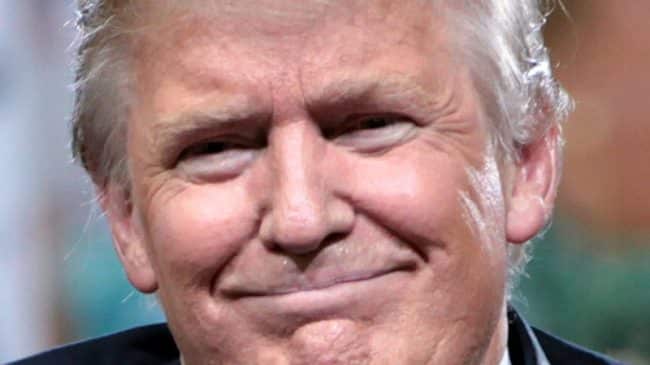The Trump administration is taking deregulation seriously. Trump has put a freeze on new regulations pending further review, and on Monday he put one of his many campaign promises into action by signing an executive order requiring federal agencies to cut two new regulations for each rule imposed and setting a cap on the total cost of new regulations proposed by each agency at zero.
While nobody has ever accused Trump of going too far into the weeds, this seems relatively straightforward. However, restricting the regulatory burden on an agency-by-agency basis is an inefficient policy and should be improved upon.
As explicit as two-for-one seems, there’s much that needs clarification. How should we count regulations? In the number of “shall not”s or “must”s? In number of pages? In midnights, in cups of coffee? Additionally, fixing the economic cost of the regulatory burden is good policy, but doing so on an agency-by-agency basis is not.
British Columbia initiated a successful campaign of deregulation in the early 2000s, with the goal of reducing the regulatory burden by one-third. Though they used the total number of regulations as their metric, the goal was to reduce the regulatory burden across the board.
Indeed, it’s possible for certain regulations, if properly implemented, to be a net gain on the economy, such as food safety standards (though government overreach is common in this space), even when they impose some costs. But, if an agency finds itself unable to cut a sufficient number of regulations to make way for necessary new regulations, we are all made worse off.
While deregulation is traditionally a conservative rallying cry (even if reality doesn’t match rhetoric), progressives would do well to carry on the legacy of the “Great Deregulator,” Jimmy Carter. The progressive case for deregulation is rather straightforward: regressive regulations harm those on the lowest rungs of the economic ladder to the benefit of entrenched interests. Rolling them back would help those least well-off the most, and economic growth makes a generous welfare state possible.
The case for deregulation is strong, and Trump seems eager to cut red tape, but his strategy lacks nuance. To this end, the Trump administration should extend his cost-neutral approach to the entire regulatory state, not just specific agencies.
The benefits of this policy are not limited to the direct economic effects of deregulation. Proposed and existing regulations will face greater scrutiny, making the regulatory state more accountable. In an environment where rulemaking is zero-sum, regulators have a strong incentive to check each other’s math, increasing the likelihood that all regulations will receive greater scrutiny.
Competition between agencies, like competition between firms in the market, creates accountability mechanisms. If OSHA wants to impose a billion-dollar regulation, why reduce its own influence when it could find $1 billion in fat to trim from a different agency? Instead of forcing executive agencies to prioritize regulations within their own domain, the administration should force them to highlight inefficiencies across the executive branch.
When regulation becomes zero-sum and agency heads must justify not only new rules, but find rules or agencies to eliminate to make way for new rules, the regulatory state becomes self-regulating as agencies “compete” for the ability to implement their preferred policies. Vying for control of a given policy area will lead to consolidation and, as a result, efficiency. And who better to coordinate these decisions among competing agencies than someone who campaigned on his business acumen?
This should come with a caveat: rivalry in government can be counterproductive. Agencies are rarely consolidated or eliminated, even when creating new ones produces redundancies as multiple agencies operate in the same policy space. The Commodity Futures Trading Commission, responsible for regulating futures and other options, is partly under the purview of the Agriculture Committee. This gives legislators in an otherwise unconnected committee an entry (or veto) point on issues related to financial regulation, even if those questions are better left to other committees. This byzantine design leads to “regulatory shopping,” where firms gravitate towards regulators favorable to their interests, creating a race to the bottom.
This dynamic isn’t exclusive to economic policy. In Flawed by Design, Amy Zegart shows how inefficiencies in the US intelligence community were baked-in by Congress and executive agencies unwilling to sacrifice power to a centralized, effective intelligence agency. Interestingly, the executive order exempts regulations related to national security.
Capping and cutting the trillions of dollars in compliance costs imposed by the regulatory state will lead to political casualties in the form of agencies who would have their influence, and likely their budgets, slashed. Further, the incoming Trump administration’s McCarthy-esque request for a list of persons working on climate change at the Department of Energy is alarming, and calls into question the administration’s ability to properly weigh the merits of repealing or replacing various regulations. In what will likely become one of the least transparent presidencies in American history, any marginal increases in accountability should be welcome.
If a price tag can be placed on each regulation, it will be easier to identify misconduct on the part of the executive. And if this increased competition between regulatory agencies becomes intolerable or any figures from the Trump administration become suspect, perhaps Congress will reclaim its rightful place as the primary source of economic regulation
